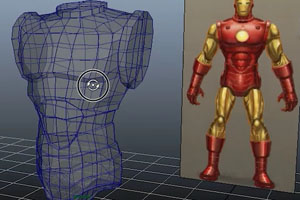
by Nash Lin | Jun 10, 2013 | 3D Modeling Tips
This is a sneak preview of modeling Ironman's chest plate tutorial. Low poly modeling technique is applied in this video to encourage the fundamental idea of sculpting in 3D software. 3D Modeling is very similar to drawing. When we draw, we can choose from various...

by Nash Lin | Jun 12, 2012 | 3D Modeling Tips
Reference image 3d modeling technique is to help modelers speed up their modeling process by 'drawing' over their reference images or designs accurately. With just 5 to 10 minutes to insert a reference image before starting to model a 3D object, you speeds up your...




